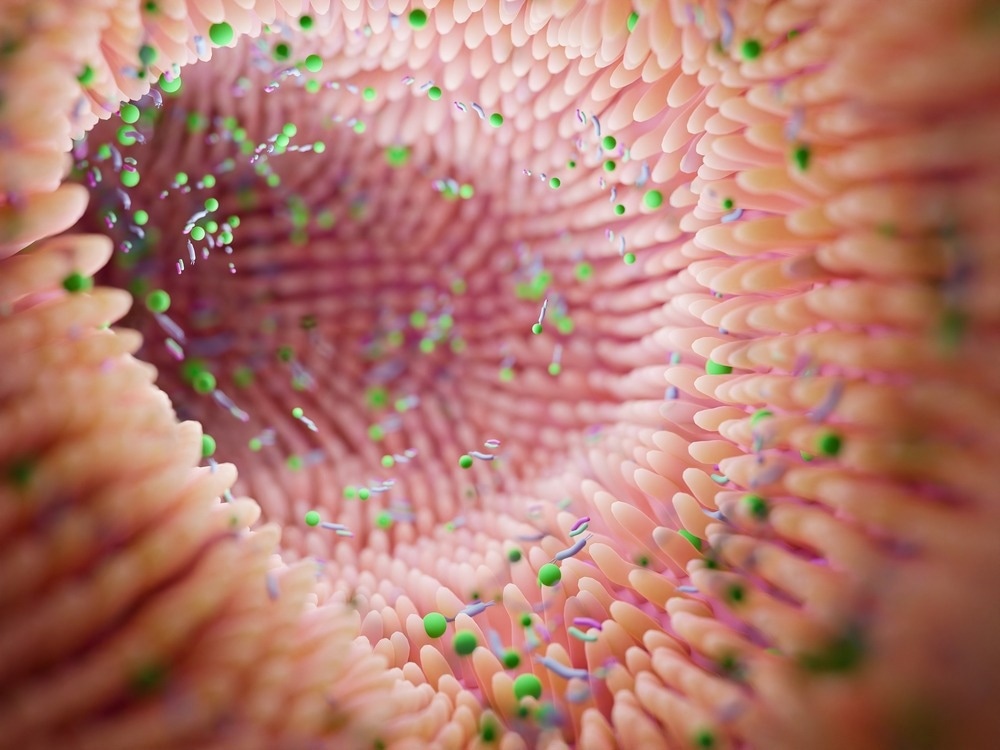In a recent study published in The Lancet Microbe, researchers assessed the role of gut bacterial microbiome assembly and the gut mycobiome in relation to health, pathology, and clinical applications.
 Study: The gut mycobiome in health, disease, and clinical applications in association with the gut bacterial microbiome assembly. Image Credit: Troyan/Shutterstock
Study: The gut mycobiome in health, disease, and clinical applications in association with the gut bacterial microbiome assembly. Image Credit: Troyan/Shutterstock
Background
Studies have built a framework for investigating how gut fungi are connected to—or perhaps cause—different diseases and how to alter gut fungi to treat diseases by revealing the landscape of gut mycobiome composition in humans. Importantly, available mycobiome discoveries are not extensively applied to clinical practice, and gut fungi are still widely ignored in the context of treatments based on the microbiota.
Gut mycobiome and disease
Dysbiosis in gut mycobiome during diseases
According to studies conducted on mice, altering the intestinal fungi through oral administration of antifungal medications worsened allergic rhinitis and colitis, indicating that an imbalance in the gut mycobiome may play a role in the pathogenesis of intestinal as well as extra-intestinal diseases. Similar comparisons between the gut mycobiomes of healthy people and patients with various intestinal and extra-intestinal disorders have been documented in many studies.
Furthermore, alterations in the gut mycobiome have also been causally or associatively linked to the onset and development of cancers like colorectal and pancreatic ductal adenocarcinomas. A relationship has also been found between mycobiome alterations and the emergence of intestinal graft-versus-host disease (GVHD) following allogeneic hematopoietic cell transplantation.
Damaging roles of disease-associated gut fungi
Numerous disorders, such as inflammatory bowel disease (IBD), GVHD, C difficile infection, asthma, liver disease, schizophrenia, and coronavirus disease 2019 (COVID-19), have continuously been associated with the proliferation of C albicans in the gut mycobiome. C. albicans was more prevalent in the stomach as a result of intestinal inflammation, which also led to the development of antifungal Th17 cells that have shown cross-reactivity with Aspergillus fumigatus and other fungal species.
The growth of the Th17 cell population in the lungs and subsequent airway inflammation caused by such cross-reactive interaction of intestinal C-albicans-induced Th17 cells with airborne fungus support a systemic, distal relationship between gut fungi and respiratory illness.
Disrupted association between gut fungi and bacteria in disease
To track the evolution of the gut microbiome ecology, a 2021 study collected the longitudinal absolute abundances of fungal and bacterial species in the gut of preterm infants. An inverse correlation between bacterial and fungal loads in the guts of preterm infants was observed, and a single fungal species (i.e., C. albicans) hindered several dominant genera of gut bacteria during infant development. The researchers concluded that cross-kingdom, directional interactions could affect the assembly of the gut microbiome.
Future studies should acknowledge and extensively explore the importance of intra- or interkingdom interactions among gut fungus and bacteria, while the majority of present gut mycobiome investigations in human disorders aim to find disease-causing fungal species.
Association between gut fungi, bacteria, and host immunity
Interactions between host immunity and gut fungi
Studies on mice revealed that mono-colonization with either C. albicans or S. cerevisiae effectively reversed the vulnerability to colitis and influenza A virus infection following the removal of gut commensal bacteria by antibiotic treatment. Later research revealed that mannans were the key mediators in the protective effects of commensal fungus. These results demonstrated that intestinal fungi could effectively replace bacteria by providing immunity against inflammatory and infectious diseases.
Additionally, it has been found that both healthy people and people with inflammatory bowel disease have antibodies against fungal beta-glucan and other fungal antigens in their serum, indicating that fungi may also trigger host humoral response.
Interactions between bacteria and gut fungi with respect to host pathophysiology
Gut fungus interacts extensively with the gut bacterial populations in addition to having a direct impact on the host. To affect bacterial colonization, gut fungi can generate antimicrobial peptides along with alcohol and other metabolites. By producing fatty acids, bacteria in turn control the germination and proliferation of hyphae in fungi. Because C. albicans decreased the amount of dissolved oxygen in the area, C difficile and other anaerobic bacteria could proliferate more easily. In gastric biopsy samples, C. albicans and Helicobacter pylori were discovered to interact with H. pylori existing within vacuoles in C. albicans cells, possibly to survive the stomach's acidic environment.
Gut mycobiome in clinical application
Fecal microbiota transplantation (FMT)
FMT was first scientifically proven to be extremely efficient for refractory C difficile infection. It involves administering fecal solutions from healthy donors into a patient's digestive system with the goal of reconstituting the intestinal microbiota. Since then, increasing numbers of clinical trials have used FMT to treat a variety of additional disorders. However, therapeutic efficacy varied between people and conditions, and bacterial engraftment was unable to account for all variations in treatment results. Recent research highlights the importance of gut fungus in FMT treatments.
Antifungal and antibiotic drugs
Treatment with fluconazole has been shown to successfully prevent gut C. albicans colonization in ulcerative colitis patients and to lower the ulcerative colitis activity index in animals. Similarly, in rats with irritable bowel syndrome, fungicides can reduce visceral hypersensitivity. Although antifungals can unintentionally target gut-colonizing fungi, such as beneficial lineages, it is still difficult to treat disorders other than fungal infections using broad-spectrum antifungals.
The gut mycobiome, in conjunction with the gut bacterial microbiome assembly, is believed to play a significant influence on human health and a number of disorders, according to research.